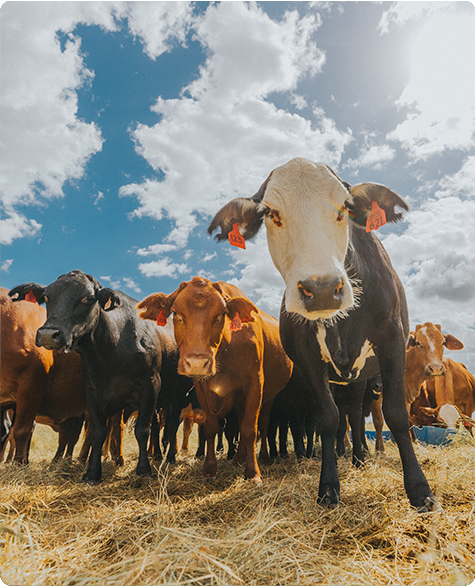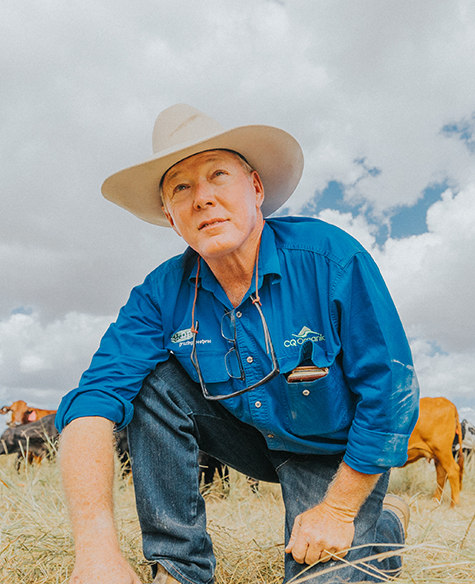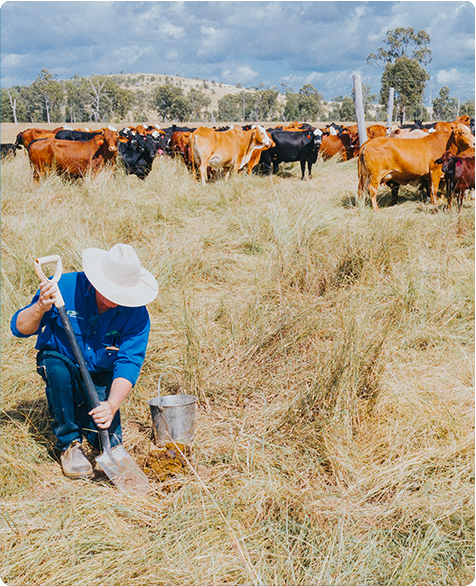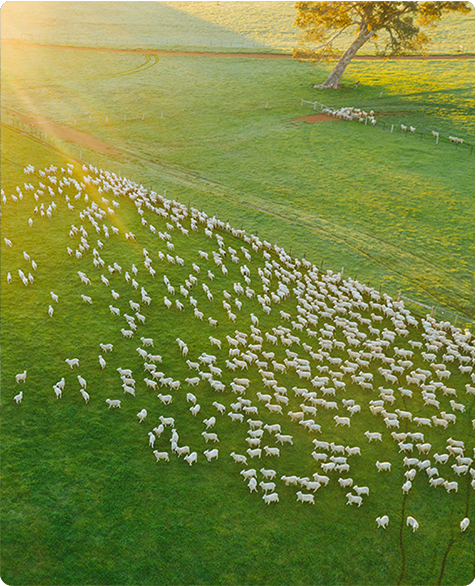- Greenhouse gas (GHG) emissions have reduced by 78.56%1 in the period between 2005 and 2021
- The amount of water used to produce a kilo of beef has reduced by 68% since 1985
- Australia has the second-largest average net gain in forest area from 2010-2020 among all OECD countries, according to the Food and Agriculture Organization of the United Nations’ (FAO) Global Forest Resource Assessment 2020.
With lamb and beef production taking steps in the right directions, the entire industry is aiming to be carbon neutral by 2030 (CN30).
You can continue to enjoy red meat while knowing that the Australian red meat industry is paving the way for a more sustainable future.
Protein with less emissions...how?
The national red meat and livestock industry will continue to reduce the emission of greenhouse gases (GHG), honouring its commitment to become carbon neutral. But how, you ask?
The sector plans to become carbon neutral by reducing methane emissions through innovative new feeds, management of land and the ways the animals graze and naturally improving genetics. Farmers are also storing (sequestering) carbon in the trees and soil.
The red meat industry is one of the first industries in Australia to set such an ambitious target. They will combat climate change by using pastures that require less fertiliser, looking after native vegetation, capturing biogas from waste streams to generate electricity and increasing the use of renewable energy just to name a few.
Australian farmers have already made strides towards the industry's CN30 goal.
How can farming assist in the fight against climate change?
Motivated by the idea that farming and Australian agriculture can really assist with the fight against climate change, Mark Wootton of Jigsaw Farms is one farmer working towards the more sustainable production of lamb, wool and beef.
In 2011 his farm achieved carbon neutrality and has maintained a low footprint since. He said that this was achieved through planting trees to store carbon and offset the emissions caused by the livestock and using perennial pastures, which take some of the gasses produced by livestock from the atmosphere and lock them in the soil as carbon.
Nearly 700,000 trees were planted, covering nearly 20 per cent of the land on Jigsaw Farms - providing not only carbon storage but areas for animals to use for shelter, shade and protection from the wind and elements.
Wootton added: “I'm really optimistic about the important role agriculture has to play in terms of climate change in providing food and fibre that the world needs in a carbon friendly way.”
So, there you have it! The next time you bite into a big juicy burger or fall-apart slow-cooked lamb shanks, may these eco-friendly efforts by the red meat industry give you peace of mind.
To learn more about the industry’s ongoing commitment to improving the sustainable journey from paddock to plate, take a look at how we're helping to reduce waste and many other resources below.
1 Data analysed from 2021 National Greenhouse Gas Inventory and 2021 Greenhouse gas footprint of the red meat industry
2 Data analysed from Quarterly Update National Greenhouse Gas Inventory and 2021 Greenhouse gas footprint of the red meat industry





